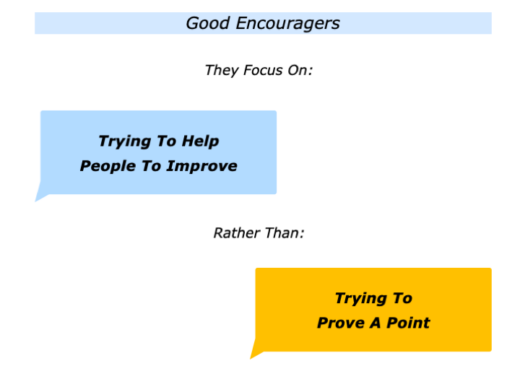
Some people aim to help others to improve. Good coaches, for example, invite people to look at their performances and explore the following questions.
What did you do well? How can you do more of these things in the future? What do you think you could do better and how?
They then encourage people to build action plans that they can own, believe in and implement to improve their performances.
Other people simply aim to prove a point. They aim to allocate blame or show where others have failed. Maybe the intention is to help others to improve. The style they use, however, tends to close down other people’s systems for learning.
Let’s explore how you can follow your own path towards helping people to improve.
Being helped
to improve
If you wish, look back on your own life and work. Can you think of a time when somebody took the time to help you to improve?
What did they do right to help you feel safe and open to learning? They may have been a mentor, teacher or somebody else who had your best interests at heart. How did they help you explore the ways you could improve?
Good coaches in sports, for example, believe that:
“After a performance, it is important that the performer evaluates their own performance first.”
Why? The athlete will have put their heart and soul into the performance. Aiming to do their best, they will feel empty and exhausted.
Athletes want to improve. But there is a time and place for them to integrate the learning. They need to rest, recover and then reflect on their performance.
Frequently they will then go to the coach and be critical of their own efforts. Some of this is simply catharsis. Some of it may be negative self-talk.
Good coaches invite the athlete to channel their feelings by focusing on the following things. First, the specific things they did well. Second, the specific things they can do better in the future and how.
Good coaches then make a psychological contract with the athlete. They say:
“Is it okay for me to share some ideas?”
Why? They believe it is important to establish a person’s openness and will before helping them learn a skill. After establishing the contract, they try to pass on knowledge in a way the athlete can use to improve their performance.
Good coaches conclude such a session by inviting the athlete to sum up their learning. They say things like:
“Looking at what you and I have explored, what do you want to focus on in the future?
“What are the things you want to keep doing? What are the things you want to improve and how?
“What are the specific things you believe you can do to make these happen?”
If you wish, try tackling the exercise on this theme. This invites you to do the following things.
Describe a specific time when somebody aimed to help you improve, rather than prove their point.
Describe the specific things they did right then – the principles they followed – to help you improve.
Describe the specific things you can do to follow these principles in your own way – plus maybe add other skills – to help other people improve.
Helping people
to improve
Imagine that you want to help people to improve. This could be an individual or group of people.
As mentioned earlier, the first step is to establish if they are open to learning. There are many ways of clarifying whether they have the will.
Good educators, for example, often follow the old rule that ‘the learner learns what they learner wants to learn’. Whether working with an individual or group, they establish the learner’s agenda.
They often do this by first showing that they understand people’s world. Communicating in a way that connects with people, they may say things like:
“As far as I understand it, the overall goals you want to achieve are: To … To … To … There may, of course, be other goals you want to achieve.
“The kinds of things I can offer to help you to achieve your picture of success are: How to … How to … How to …
“The kinds of things I can’t offer, because others are experts in it, are: …
“Let’s begin by agreeing on the agenda for the session. What are the kinds of topics you feel it would be useful to explore? For example:
“How to …
“How to …
“How to …”
After agreeing on the agenda, the educator then helps people to explore each topic in turn. When covering each item, the educator often does the following things with people.
They clarify the real results to achieve and establish people’s picture of success.
They provide positive models and practical tools that people can use to achieve their picture of success.
They help people to integrate the learning and achieve their picture of success.
Different educators do this in different ways, but they often follow certain principles. They believe the learning works best when it is:
Personal – it must relate to the learner’s agenda;
Practical – it must provide implementation tools that work;
Profitable – it must, in the widest sense, be profitable and help the learner in their life or work.
Good educators sometimes follow the guidelines used by good coaches. They watch a person in action or see an example of their work.
Before giving their response, they ask themselves the following questions.
“What is the person doing well and how they can follow these principles in the future? What can the person do better in the future and how?
“What are the key messages I therefore want to give to the person? What are the positive models and practical tools I can pass on to help them to succeed?
“How can I pass on these ideas in a way the person can use to achieve their goals?”
You will, of course, have your own way of sharing knowledge that helps people to succeed. If you wish, try tackling the exercise on this theme. This invites you to do the following things.
Describe a specific situation where you want to help a person or group to succeed, rather than you prove a point.
Describe the specific things you can do to help them to improve.
Describe the specific things that will be happening that will show they have improved.
Helping myself
to improve
There are many ways to help people to learn. So how can you use some of these principles in your own development?
One approach is to use something called My Right Book. This is an approach that I have used with people when working in therapeutic communities, sport, business, the arts and other fields.
Every night the person records: a) The things they have done right that day; b) The things they can do better tomorrow and how. They then use this as a way of building on their successful patterns and finding solutions to challenges.
Another approach is to apply basic strategic planning to one’s own development.
Step One is to clarify the specific area – the activity, task or skill – in which you want to develop and achieve success.
Step Two is to clarify the real results you want to achieve.
Step Three is to clarify the key strategies you can follow to give yourself the greatest chance of success.
Step Four is to clarify the specific benefits of achieving these results.
The key, as ever, is to focus on the real results you want to achieve. It is vital to clarify the ‘What’ before rushing into the ‘How’. It is important to make sure you are climbing the right mountain.
A person may say, for example, that they want to improve in a particular area to gain promotion on the career ladder. But do they want promotion or do they want to do satisfying work that also earns a good salary? It may be that there are other ways to achieve their real goal.
There are many ways to improve, rather than focus on proving a point. This can sometimes apply to one’s own self-talk, as much as to interacting with other people.
If you wish, try tackling the exercise on this theme. This invites you to describe a specific area in which you want to improve and then do the following things.
Describe the real results you want to achieve.
Describe the specific things you can do to give yourself the greatest chance of achieving success.
Describe the specific benefits of achieving these results.


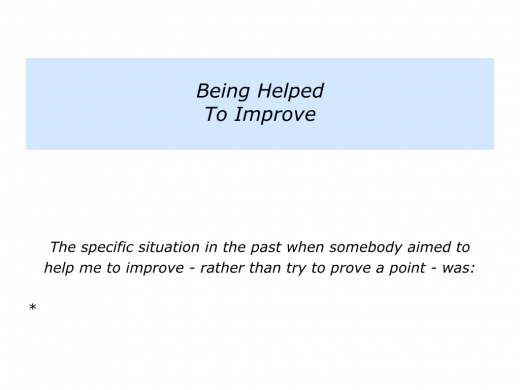
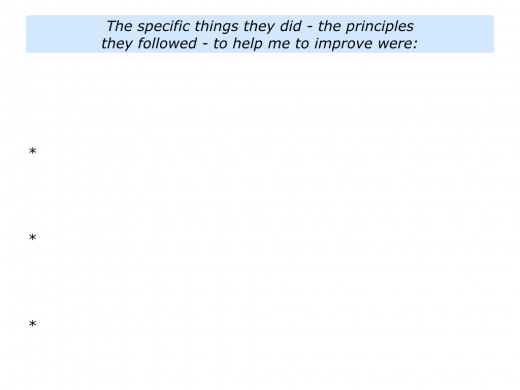
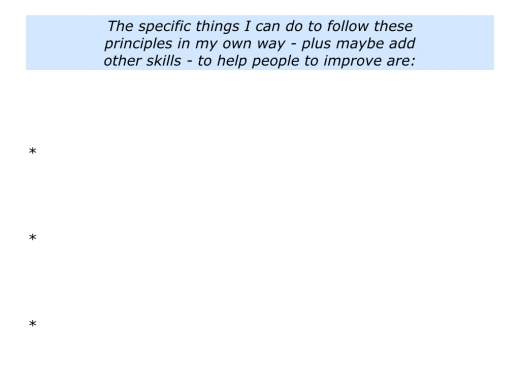
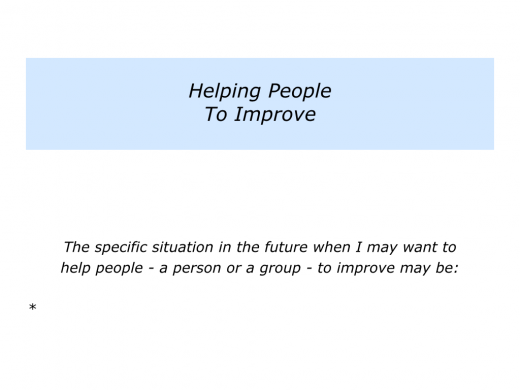
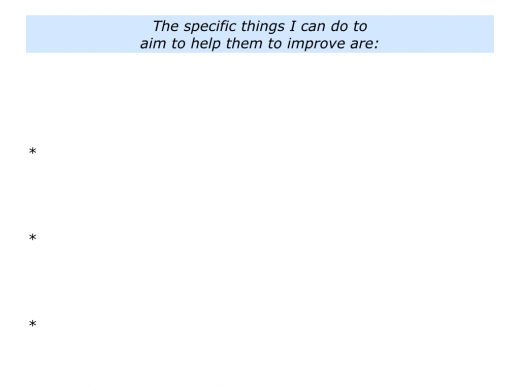

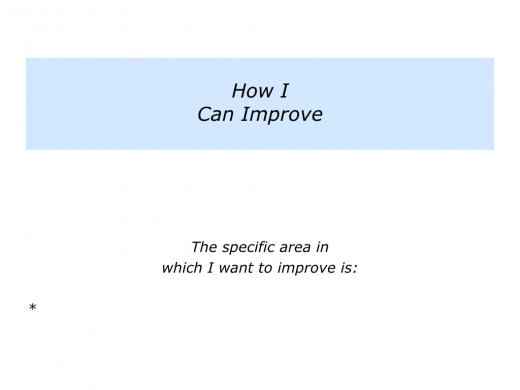
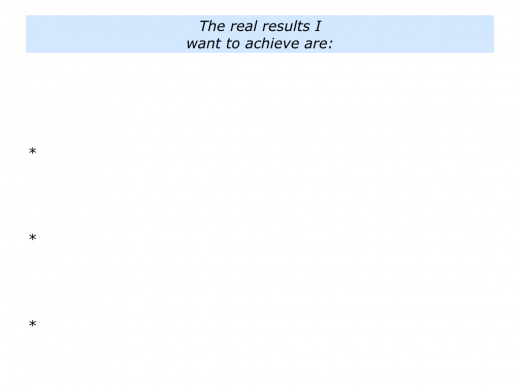
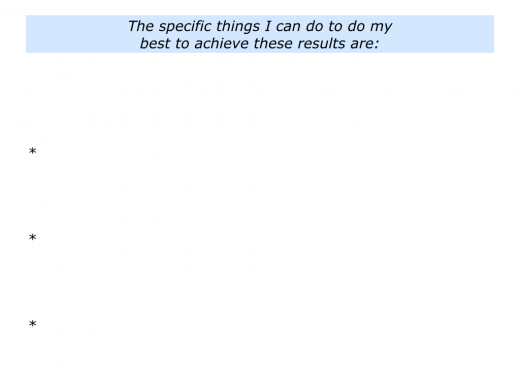
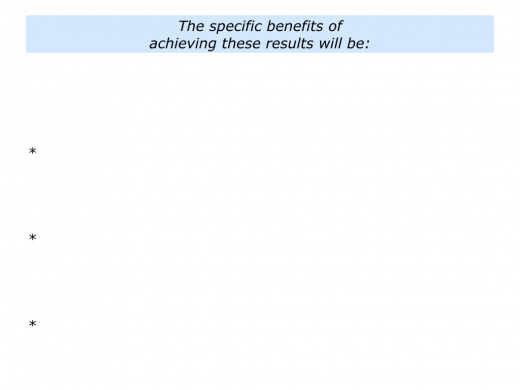
Leave a Reply